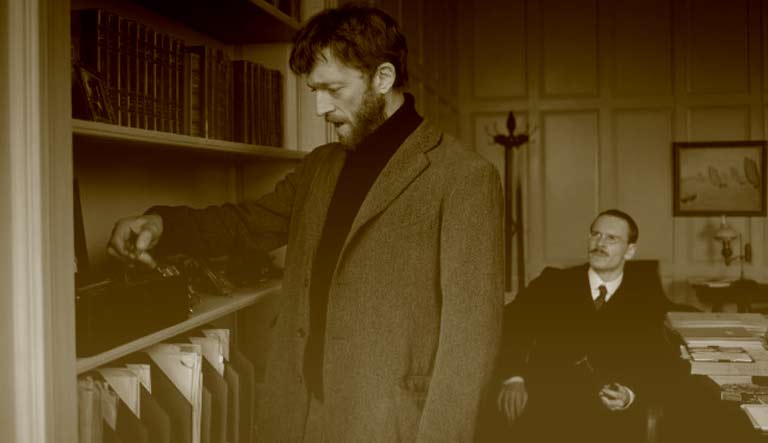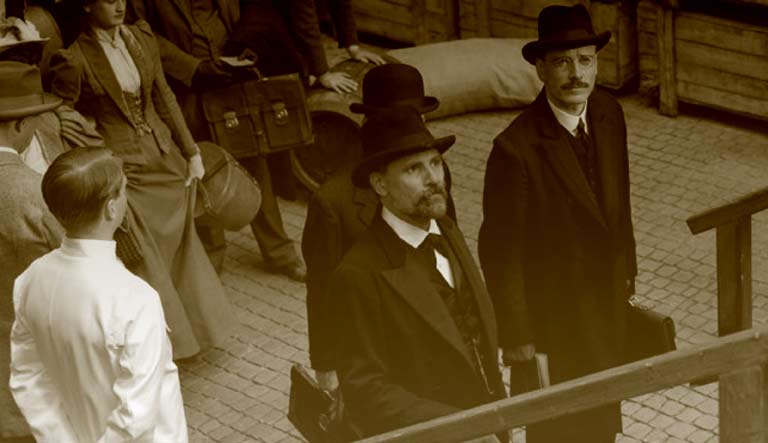
|

|

|

|

|

|

|

|

|

|

|

|

On the eve of World War One, the vibrant cities of Zurich and Vienna are setting for a dark tale of sexual and intellectual discovery.
Zurich, 1904. 29-year-old psychiatrist Carl Jung is at the beginning of his carrer, and lives with his pregnant wife Emma at Burgholzli hospital. Inspired by Sigmund Freudís work, Jung tries Freudís experimental treatment known as psychoanalysis, or ďthe talking cure,Ē on 18-year-old Sabina Spielrein.
Sabina is a well-educated Russian who speaks fluent German, has been diagnosed with hysteria, and is known to be disruptive and violent. In talks with Jung, she reveals a childhood marred by humiliation and beatings from her authoritarian father. The psychoanalysis uncovers a disturbing sexual element to her dysfunction, which upholds Freudís theories connecting sexuality and emotional disorders.
Through his correspondence on Sabinaís case, Jung forges a friendship with Freud, and their first meeting is a marathon affair. Relationships deepen between Jung and Freud, who sees Jung as his intellectual heir, and between Jung and Sabina, who is brilliant despite her ailment. Her treatment is successful, and Sabina pursues a career as a psychiatrist with Jungís encouragement.
Freud asks Jung to treat a fellow psychiatrist, Otto Gross, whom he describes as a committed immoralist and drug addict. Jung is intrigued by Grossís defiant and clever arguments against monogamy.

After being influenced by gross, Jung pushes aside his own ethics and gives in to his feelings for Sabina. They enter into a sexual tryst, violating the doctor/patient relationship.
Freud and Jung begin to grow apart due to their clashing ideologies. Jung protests Freudís rigid adherence to his theories about sex, and Jungís growing interest in mysticism further threatens their alliance. They travel to America together, which Jung sees a s a great opportunity, whereas Freud has misgivings.

Tortured by guilt, along with the responsibility he feels to his profession, Jung breaks it off with Sabina. Sabina attacks Jung in his office, cutting his cheek before fleeing to Geneva to become Freudís patient. Jung loses integrity in Freudís eyes by denying the affair in a letter, a desperate attempt to keep his professional standing. This subterfuge also damages Sabinaís credibility. She and Jung later reach an understanding after sleeping together one last time. This time it is Sabina who decides she needs her freedom.
As he parts ways with Jung, Freud faces his own mortality. He sees Sabinaís potential as a therapist, and gives her some of his own clients. As Sabina establishes herself professionally, her attachment to Jung wanes.
We end in 1913, as a married and pregnant Sabina visits Jung to find that his marriage has survived, and that he has a new mistress. With World War I approaching, Jung has changed from the optimistic young man we first met. He has learnt much but in doing so has damaged those people close to him, and in the process has become damaged himself. Sabina and Jung reach a bittersweet closure.
